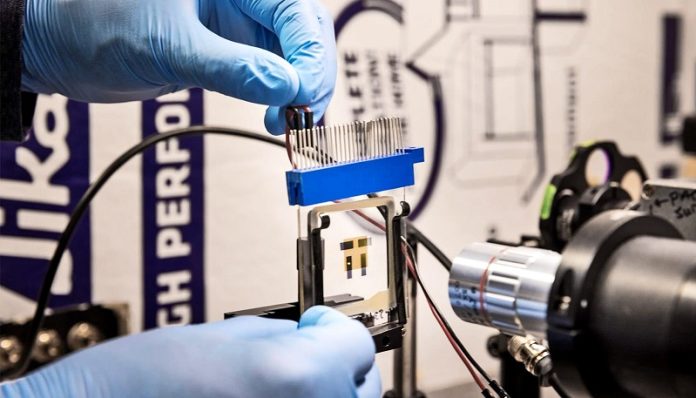
Scientists have developed a new type of OLED (organic light-emitting diode) that may replace bulky night vision goggles with lightweight glasses.
These glasses could make night vision cheaper, more comfortable, and easier to use for long periods.
The new technology also has potential for improving computer vision systems by helping them both sense and interpret light signals.
Current night vision systems use a process that converts near-infrared light into electrons. These electrons travel through a vacuum and hit a special screen, which then converts them into visible light.
The incoming light is amplified about 10,000 times, allowing the wearer to see clearly in the dark. However, this process requires a large, heavy, and power-hungry device.
The new OLED technology also converts near-infrared light into visible light, but it is much lighter, uses less power, and doesn’t need a vacuum layer.
It amplifies light more than 100 times, and researchers believe they can increase this even more by improving the design.
One of the key advantages is that it works within a thin film layer less than a micron thick—thinner than a human hair.
The lower voltage needed to power these OLEDs can also reduce energy use and extend battery life, making them more practical for long-term use in the field.
The new device operates by absorbing infrared light, converting it into electrons, and then using a stack of five OLED layers to turn those electrons back into visible light.
Some of these photons (light particles) are emitted so the user can see, but others get reabsorbed, creating more electrons and triggering a positive feedback loop that amplifies the light output.
Previously, OLEDs could convert infrared light into visible light, but only at a one-to-one ratio, meaning one input photon created one output photon.
The breakthrough here is that this new OLED can produce multiple output photons for each input photon, making it much more efficient.
Interestingly, this new OLED technology also shows a memory effect. The light it produces can depend on how long and how intensely it was illuminated before, a behavior called “hysteresis.”
This feature could be useful for future computer vision systems, as it mimics how neurons in the human brain process information by remembering past signals.
This ability to “remember” past light inputs could help OLEDs process and classify images more effectively.
The device was made using common materials and manufacturing methods that are already used in producing other OLED products, making it affordable and scalable.
The research, supported by DARPA, involved collaboration with OLEDWorks and RTX, companies working in OLED lighting and aerospace technology.



